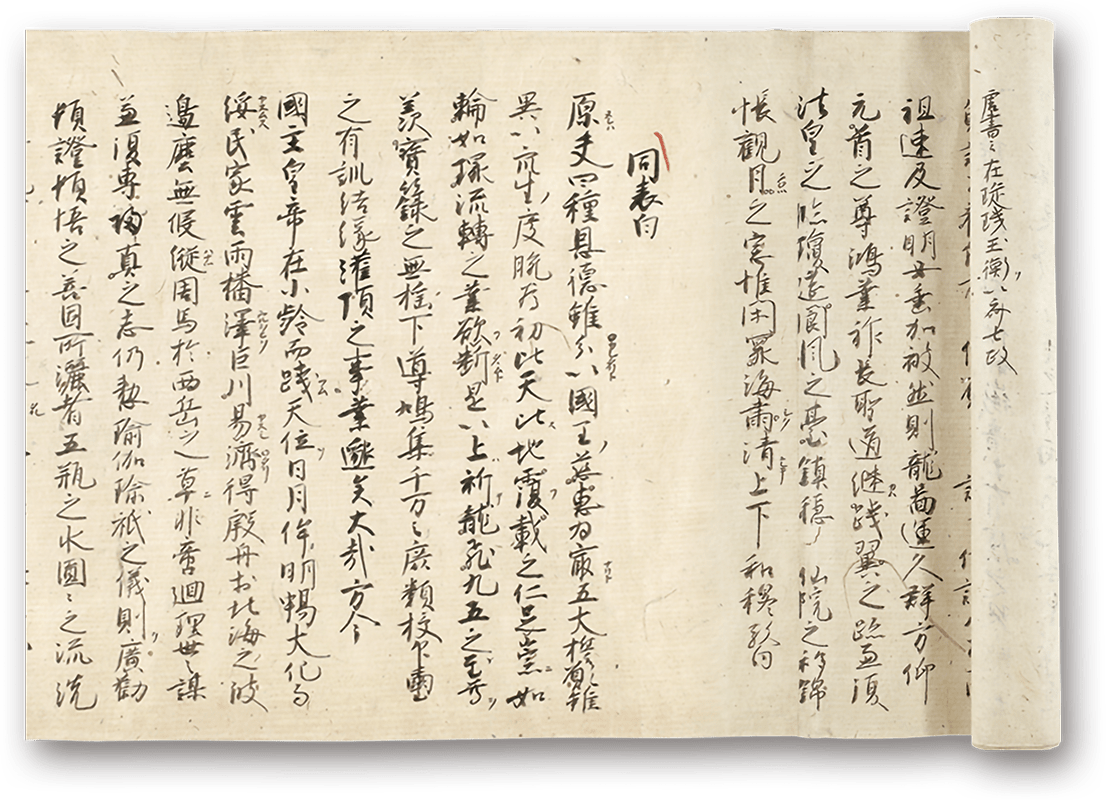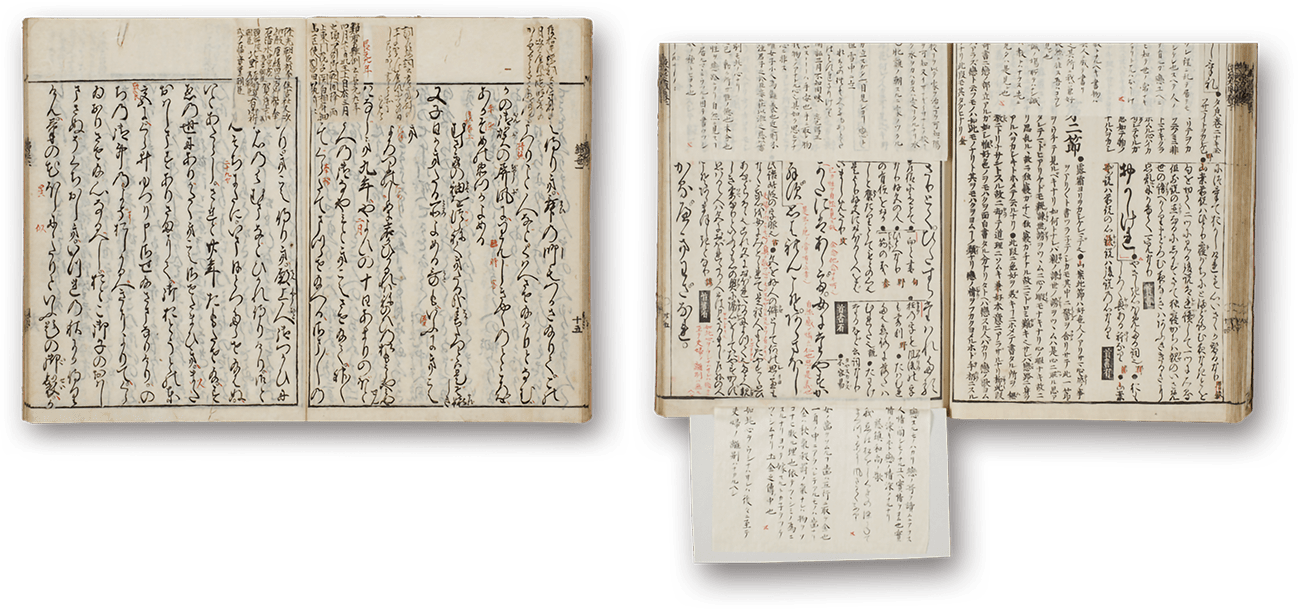Kakiire, Fusen (Tag), Harigami (Patch) - 書き入れ・付箋・貼り紙
Readers may write down notes or memos directly on a book, or on a separate piece of paper attached to the book. The former is called kakiire, and the latter a tag or patch.読者が、注記や覚書などを本に直接書き込んだり、別紙に書いて貼り付けることがあり、前者を書き入れ、後者を付箋または貼り紙と言います。
Kakiire - 書き入れ
Kakiire - 書き入れ
Guiding marks written down in Chinese sentences, or notes, supplements or memos written in the space between lines or a margin. Some are unique to the applicable book, while some were transcribed from the original or another book. Kakiire written on the reverse side of a leaf in kansubon or orihon is particularly called uragaki.漢文に訓点を付けたり、行間や欄外などに注釈・補記・覚書などを書き込んだものです。当該の本に固有のもののほか、親本や別の本から書き写すこともあります。なお巻子本や折本の紙背に書かれたものは、特に裏書と言います。
Uragaki - 裏書

Hyōbyaku Gosō - 表白御草
Uragaki - 裏書
Annotations or supplements written on the reverse side of a leaf (shihai) in kansubon or orihon. In principle, it is written on the reverse side of the words or article it refers to.巻子本・折本などにおいて、裏面(紙背)に記入された注釈や補記の類。原則として、対象となる言葉や記事の裏の位置に書かれる。



